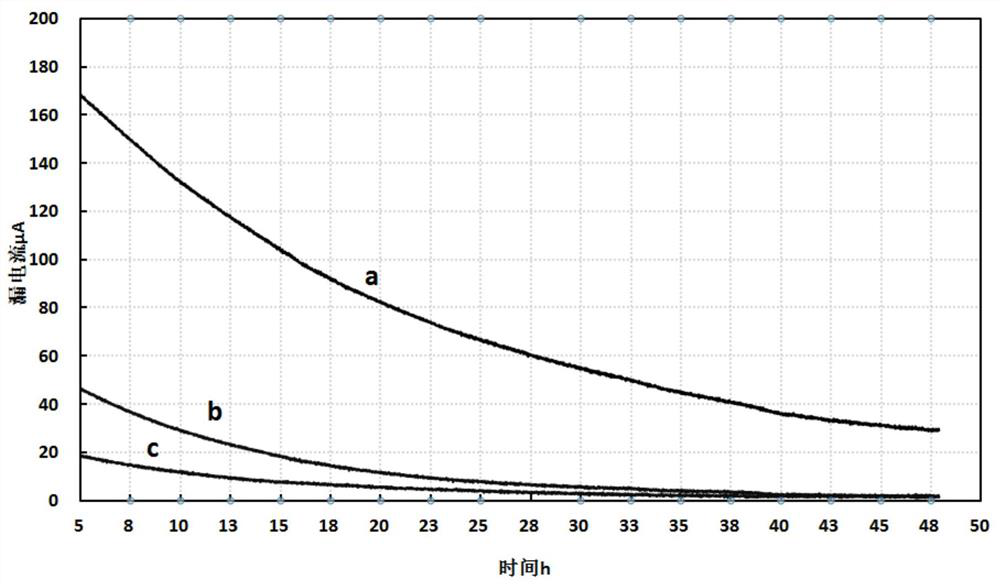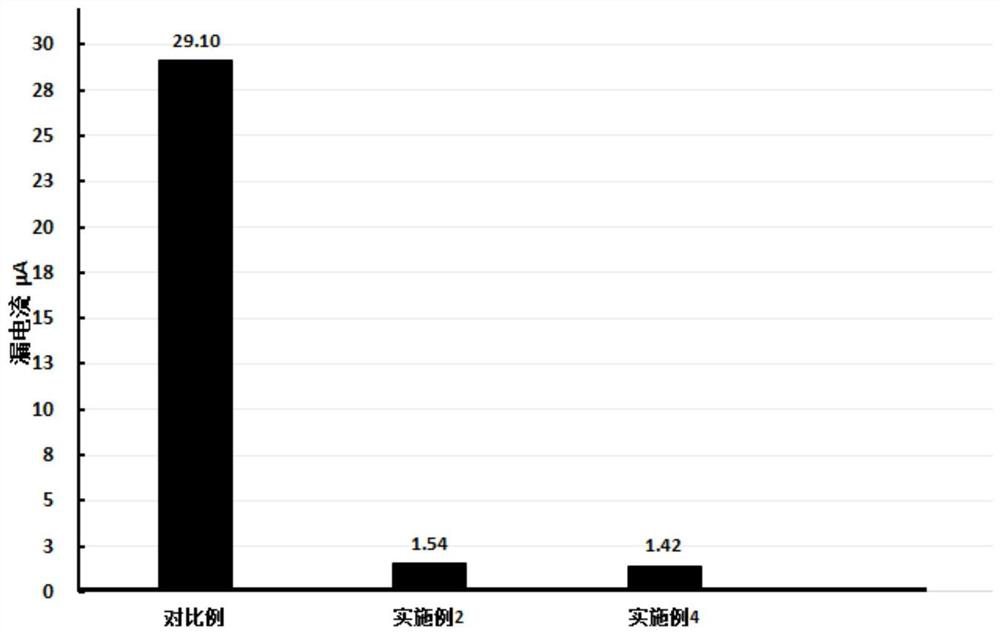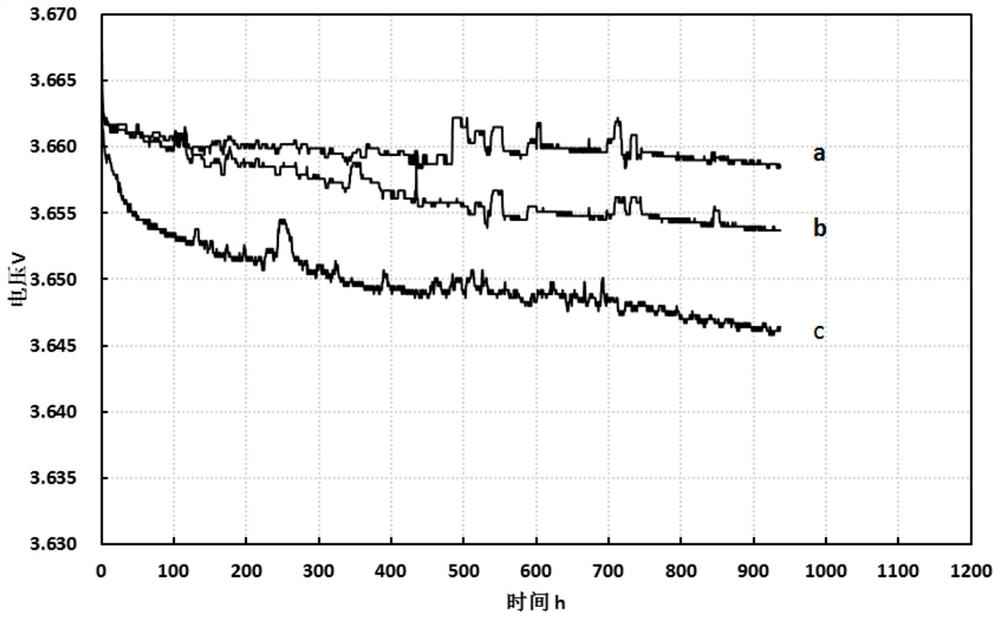Formation method of multi-stage capacitor battery
A technology of capacitor battery and formation method, applied in electrochemical generators, circuits, electrical components, etc., can solve the problems of poor power performance, short cycle life, large leakage current, etc., to improve density uniformity, prolong battery life, Reduce the effect of self-discharge
- Summary
- Abstract
- Description
- Claims
- Application Information
AI Technical Summary
Problems solved by technology
Method used
Image
Examples
Embodiment 1
[0030] Put the capacitor battery in an environment of 40°C and normal pressure for 22 hours, and then perform the following steps:
[0031] Step 1. Under normal temperature and pressure conditions, firstly charge the capacitor battery with a constant current of 1.6mA until the voltage of the capacitor battery is 2.9V, and then charge the capacitor battery with a constant current of 5.6mA until the voltage of the capacitor battery is 3.2V;
[0032] Step 2: Charge the capacitor battery with a constant current of 3.4mA until the voltage of the capacitor battery is 3.6V, then turn off the power and let it stand for 28 minutes;
[0033] Step 3: Charge the capacitor battery with a constant current of 9.6mA until the voltage of the capacitor battery is 4V, then charge with a constant voltage of 4V for 26 minutes, and finally turn off the power and let it stand for 23 hours.
Embodiment 2
[0035] Put the capacitor battery in an environment of 45°C and normal pressure for 24 hours, and then perform the following steps:
[0036] Step 1. Under normal temperature and pressure conditions, firstly charge the capacitor battery with a constant current of 2mA until the voltage of the capacitor battery is 3V, and then charge it with a constant current of 6mA until the voltage of the capacitor battery is 3.4V;
[0037] Step 2: Charge the battery with a constant current of 4mA until the voltage of the capacitor battery is 3.7V, then turn off the power and let it stand for 30 minutes;
[0038] Step 3: Charge the capacitor battery with a constant current of 10mA until the voltage of the capacitor battery is 4V, then charge with a constant voltage of 4V for 30min, and finally turn off the power and let it stand for 24h.
Embodiment 3
[0040] Put the capacitor battery in an environment of 50°C and normal pressure for 26 hours, and then proceed to the following steps:
[0041] Step 1. Under normal temperature and pressure conditions, first charge the capacitor battery with a constant current of 2.3mA until the voltage of the capacitor battery is 3.1V, and then charge it with a constant current of 6.4mA until the voltage of the capacitor battery is 3.5V;
[0042] Step 2: Charge the capacitor battery with a constant current of 4.2mA until the voltage of the capacitor battery is 3.8V, then turn off the power and let it stand for 33 minutes;
[0043] Step 3: Charge the capacitor battery with a constant current of 10.3mA until the voltage of the capacitor battery is 4V, then charge with a constant voltage of 4V for 40min, and finally turn off the power and let it stand for 27h.
PUM
 Login to View More
Login to View More Abstract
Description
Claims
Application Information
 Login to View More
Login to View More - R&D
- Intellectual Property
- Life Sciences
- Materials
- Tech Scout
- Unparalleled Data Quality
- Higher Quality Content
- 60% Fewer Hallucinations
Browse by: Latest US Patents, China's latest patents, Technical Efficacy Thesaurus, Application Domain, Technology Topic, Popular Technical Reports.
© 2025 PatSnap. All rights reserved.Legal|Privacy policy|Modern Slavery Act Transparency Statement|Sitemap|About US| Contact US: help@patsnap.com



